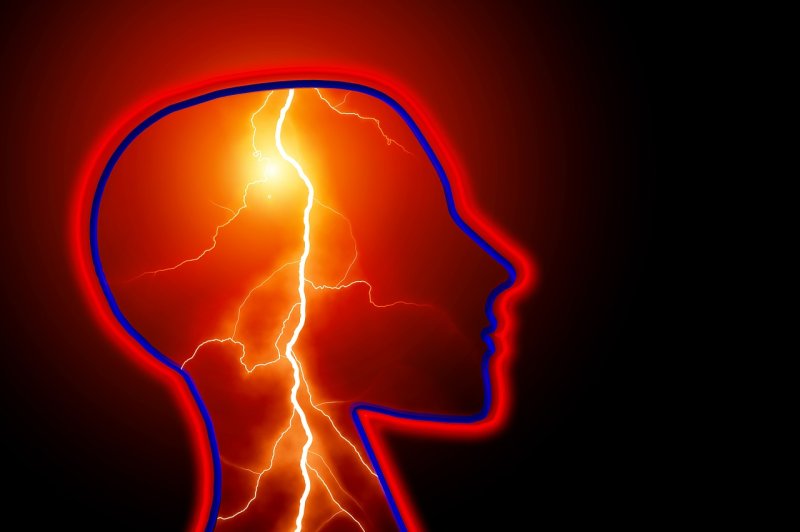University of California San Francisco researchers said in a paper published on Monday that studying recorded data of brain cycles can predict seizures in epilepsy patients. Photo by
geralt/Pixabay
Jan. 8 (UPI) -- Monthly cycles of brain activity can be used to predict seizures in epilepsy patients, a study published Monday by University of California San Francisco neurologists suggests.
The findings, published in the journal Nature Communications, indicate that clinicians may soon be able to identify likely timeframes for seizures, allowing patients to be aware of a higher chance they may experience one.
Recurrent seizures in epilepsy patients involve brief but debilitating increases in electrical activity in the brain, leading to convulsions, hallucinations and loss of consciousness. Implanted brain stimulation devices can quickly halt a seizure by stimulating a patient's brain as the event begins. One, the NeuroPace RNS System, can also record months or years of seizure-related brain activity, researchers say.
A team led by senior study author Dr. Vikram Rao of UC San Francisco analyzed data from 37 people fitted with the device, and found that seizures are less random than first thought.
While the lengths of cycles between seizures differ between patients, they are stable over years in individuals, the researchers found.
"One of the most disabling aspects of having epilepsy is the seeming randomness of seizures. If your neurologist can't tell you if your next seizure is a minute from now or a year from now, you live your life in a state of constant uncertainty, like walking on eggshells," Rao said. "The exciting thing here is that we may soon be able to empower patients by letting them know when they are at high risk and when they can worry less."
The UCSF researchers are using the data to forecast seizure risk, which could allow patients to avoid hazardous activity, including driving or swimming, when the possibility of a seizure is highest. Rao compared the process to a weather forecast.
"In the past, the field has focused on predicting the exact moment a seizure will occur, which is like predicting when lightning will strike. That's pretty hard. It may be more useful to be able tell people there is a 5 percent chance of a thunderstorm this week, but a 90 percent chance next week. That kind of information lets you prepare," he said.















